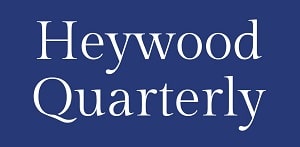Understanding the Greater Manchester model will help Whitehall deliver its priorities, says John Wrathmell
Among the first guests invited by the new Prime Minister to Downing Street after the July general election were England’s regional Mayors. Sir Keir Starmer told them he wanted to “put more power in their hands”. But who are these Mayors – and what are the combined authorities they (partly) run?
English devolution – the process of passing powers, resources and responsibilities from central government departments to local areas – has been on the political agenda for several years. It was central to George Osborne’s vision of a Northern Powerhouse when he was Chancellor, and part of Boris Johnson’s ambition to Level Up when he was Prime Minister.
But for many teams across Whitehall, English devolution is still a relatively new idea. And even those Civil Servants who regularly work with Mayoral combined authorities sometimes mistake them for mini-departments or another type of council. In reality, they’re neither.
My own journey into devolution started after my time as a Treasury Civil Servant and an enjoyable, but ultimately unsuccessful, spell working for Ed Miliband MP when he was Leader of the Labour Party. In 2015, aware that the Northern Powerhouse had become a Government priority and living back in the North, I was looking around for interesting jobs in policy and economics.
Greater Manchester (GM) was already leading the way on devolution deals with the Government (mainly the Treasury). This involved passing named powers and funding streams to the city region, in return for the Greater Manchester local authorities agreeing to have an elected Mayor. I was struck by the can-do attitude in GM (“an intractable problem no-one’s yet solved? We’ll have a crack at it…”) and the strength of common purpose (a Chief Executive from across the Pennines described it as a cult). I hope we’ve retained both over the decade since.
The English devolution model we’ve got today and the new institutions being set up through those deals – mayoral combined authorities – have been directly shaped by the history of Greater Manchester and the ideas developed there. They came out of four decades of collaboration between the ten economically interdependent local authorities, including the two split across the city centre, Manchester and Salford, which make up the city region. So when in 1986 the Greater Manchester County Council was abolished, along with its overarching responsibilities, the ten quickly had to collaborate on transport issues. Joint institutions followed to market the city region (Marketing Manchester), attract investment (MIDAS) and provide analysis and policy development (New Economy Manchester).
As the new millennium began, the first Greater Manchester Strategy was drafted and the city leaders – particularly Sir Richard Leese as Leader and Sir Howard Berstein as Chief Executive of Manchester City Council, and Lord Peter Smith as Leader of Wigan – started to develop an evidence base for greater local control over powers and resources. They asked independent economists to explore the challenges and opportunities of the city region and to provide recommendations. This culminated in the publication in 2009 of The Manchester Independent Economic Review initiated by Sir Tom McKillop and concluded by Lord Jim O’Neill (an initiative repeated in 2019 with the GM Independent Prosperity Review, chaired by Professor Diane Coyle). That evidence showed that England is one of the most centralised countries in the developed world, and has the largest productivity gaps between its capital and other cities – holding back national performance. The weight of evidence on the links between centralisation and economic underperformance has only got more compelling since.
The Statutory City Pilot agreed in the dying days of the Labour Government in 2009, and the Greater Manchester Combined Authority in 2011, were therefore established not only on more than two decades of local collaboration but on an independent evidence base. Greater Manchester was well placed to play its part when in 2014 attention in Westminster swung towards the Northern Powerhouse and the potential to promote economic growth through devolution.
How does a combined authority work?
London had led the way on English devolution, with the setting up in 2000 of a new Assembly and Mayor – separate from its local councils. But its model of devolution has now become the exception. The approach the rest of England is following – combined authorities chaired by regional Mayors – instead came out of that Greater Manchester experience.
As Sir Richard Leese says, the combined authority is not a separate tier of Government. Instead it is the mechanism by which local authorities come together to make joint decisions. The Leaders of the ten local authorities are also the Leaders of the combined authority, with the Mayor as Chair.
As an officer in the combined authority I work to the Mayor, but also to the Leaders of Stockport, Oldham, Wigan and the rest. In fact, as the officer responsible for GMCA’s economic and business policy, I work most closely with the Leader of Manchester City Council, who is also the Portfolio Lead for Economy, International & Inclusive Growth across the city region. Each of our ten Chief Executives also take a Portfolio role, while on major decisions they will all have an interest as Leaders of their authority.
A summary of the GMCA’s areas of involvement demonstrates the extent of collaboration. Housing and planning are local authority functions, with the GMCA supporting them to develop a common plan and with resources; local authorities provide local services, often with voluntary sector partners and NHS GM, with the GMCA helping to convene the system, develop and test new ideas and provide resources. Business support is largely channeled through a Growth Hub, run by the GM Growth Company, while the GMCA, universities and business groups work together to influence innovation funding allocated by UK Research & Innovation; GM Police are operationally independent, but the Deputy Mayor and the Safer and Stronger team in the GMCA carry out the functions of the Police & Crime Commissioner. In short, the GMCA is where the ‘GM family’ comes together to deliver better for residents and businesses.
It’s a model that has great strength, because decisions are then backed by all ten authorities along with the Mayor and Deputy Mayor, and often the Business Board and voluntary sector too. It provides a great understanding of place and communities. It also relies on the capacity of its local authority members, which is why sustainable and long-term funding for those authorities is an existential issue for combined authorities too.
Where we still fall short, although I hope we are improving, is in the representation and understanding of our communities. Civil Servants in central government generally understand the importance of diversity of viewpoints and experiences in the formulation of good policy. But in an organisation where effectiveness depends on its ability to join up the design and delivery of policies in a place, it is even more important. When the GMCA was set up, its staff were almost universally White British and university educated, and its management was male. In contrast, in the recent Census, White British people were in a minority in Manchester, with a wide diversity of communities across the rest of the city region. There has been a significant improvement in the diversity of our staff – including a gender pay gap which is now in favour of women – but there is still some way to go in our representation of racially-minoritised communities. Leadership across other GM organisations is also still generally white and male. Equality panels, set up by the Mayor and representing residents’ protected characteristics, have started to bring different perspectives to the understanding of problems and solutions – in some ways a blunt instrument but bringing some needed disruption.
What is a Mayor?
The instinctive response of most Civil Servants is that Mayors are like Ministers. They often talk about “devolution to the Mayor”. There are similarities, but many more differences.
For a start, the combined authority model means that Mayors can make very few decisions on their own.
Andy Burnham, the first Mayor of Greater Manchester, arrived with his Ministerial experience in central government, expecting something similar in a combined authority – with the Mayor making decisions and giving instructions to a system which (at least in theory) responds. He now describes his role as being more like that of the captain of a football team – he leads, sets a direction and takes decisions, but if one of the team has a sulk and goes to sit on the subs bench, then there’s not much he can do, and there’s not much prospect of winning.
The formal responsibilities of English Mayors vary from region to region, due to the way national Government negotiates bespoke devolution deals with each place. The Greater Manchester Mayor, for example, has the functions of the Police & Crime Commissioner and the Fire & Rescue Authority. He is responsible for the devolved transport budget and ticketing and franchised bus services, he has the power to create a spatial plan, and he controls a Housing Investment Fund. And that’s basically it. Even in those areas of competence, he generally needs the agreement of the other GMCA Leaders to make decisions, while powers over work and skills, public service reform and decarbonisation sit with the Leaders as a group.
In practice, formal voting powers are irrelevant because decisions are made unanimously and by consensus. I’m sure they are written down somewhere, but they’ve never mattered for my work as an officer. And perhaps the most striking lesson from the first few years is the Mayor’s impact far beyond his narrow formal remit. His ability to ‘convene’ and use his ‘soft’ power, terms sometimes mistaken for ineffectiveness, has often produced better results than would have been the case if he had the powers to tell people what to do.
When he was re-elected earlier this year, Andy Burnham set out four priorities for his third term: completing the Bee Network integrated transport system; developing ‘Housing First’ to improve the quality and quantity of housing; establishing ‘Live Well’ to provide joined up services for residents; and setting up the ‘MBacc’ to establish a technical education route for young people into the businesses of Greater Manchester. None of these is entirely within the Mayor’s formal responsibilities – and two of them sit almost entirely outside those responsibilities. But few people argue with his mandate or ability to deliver them.
An aspect of the role which took me particularly by surprise was the Mayor’s international reach and profile. In the early days of the GMCA we were overwhelmed by requests to meet international delegations and by invitations to travel abroad. The point at which I realised we needed to up our game was when we presented the visiting Taoiseach (the Irish Prime Minister) with a book on Manchester which started out with a detailed account of the IRA bombing in 1992. I’m not sure that the international role of Mayors was in anyone’s mind when the original devolution deals were done.
Is an MCA officer the same as a Civil Servant?
If a combined authority is not a department, and a Mayor is not a Minister, it follows that combined authority Officers are not Civil Servants. We are Local Government Officers, meaning we don’t work for the Government – we have a duty to support our Mayor and all of our Leaders.
There is a growing number of us who have formerly worked in central government. That is essential given the amount of engagement which we have with central government and the greater need to develop policy. But our closest ties, and the largest proportion of our staff, are from local government, alongside others from the private and voluntary sectors, universities, think tanks and other parts of the public sector. A particular strength is that staff tend to stay in roles for much longer than in central government, building up a level of expertise and stability of relationships which makes for better delivery.
The Ten Traits of a Great Civil Servant, summarised by Suzanne Heywood in Issue One of the Heywood Quarterly, are a good guide to the qualities needed in combined authorities too. Making deals and building networks is fundamental to making the model work. Flexibility and radical thinking are core requirements when building a new type of institution from scratch.
But there are some differences. At city-region level politicians often say they are “putting place before party” and in my experience that is generally true. It would be hard to imagine national politicians coming together in the way that Andy Burnham and Councillor Martin Cox, Conservative Leader of Bolton Council at the time, did when they held a joint press conference at the Conservative Party Conference on bus reform. Understanding of place is as important as sensitivity to politics. And being bound to place means that institutional memory and the relentlessness and tenacity to get things done are qualities more often on display in a combined authority. For example, Greater Manchester managed to develop its spatial plan despite national legislation requiring more than a decade of consultations and legal processes. As more powers and resources are devolved to the English regions, combined authority officers will need to be better at critical thinking and policy development, skills that were often squeezed out from local government during the last half century of centralisation.
How can Whitehall and mayoral combined authorities work together?
As you would expect with building a new type of institution, we’re all still learning – nationally and locally – how central government and combined authorities can work effectively together.
The relationship between central and local Government is often described as a ‘parent-child’ relationship, with the parent giving instructions to a largely obedient child. For devolution to realise its potential, the parent is going to have to let go and the child needs to grow up.
New ways of working are springing up, particularly in the departments that have been most closely involved in the devolution process, such as the Ministry of Housing, Communities & Local Government and HM Treasury. The agreement of a new ‘Integrated Settlement’ as part of the spending review process which will automatically allocate funding to combined authorities in specific areas of responsibility – in return for being held accountable for the delivery of agreed outcomes – is a significant step. Collaboration, trust and commitment to achieving common goals are starting to replace the giving of instructions and the imposition of rigid processes. But, letting go of control is not something that comes easily to parents, or in a Civil Service where the ability to control is often central to achieving Ministers’ ambitions. A common refrain from Civil Servants when faced with the prospect of devolution for the first time is that it’s a great idea, but only if funding is spent in line with their Departmental aims, and they are able to monitor the spending. That’s not devolution.
What does growing up look like for a combined authority? Devolution will only be effective if we can make decisions and get things done. That requires taking the Greater Manchester model and showing it can work with greater powers, resources and responsibilities, and in other parts of England. It works in Greater Manchester because of the now 40 years of institution building, joint working and close relationships. It’s a model which doesn’t need to take 40 years to bed down in other parts of England; but it won’t be done in four months either. Local political leaders and sectors across England, used to competing with each other for votes and resources, will need to set aside rivalries, agree common goals and trust each other to work towards them.
And as those powers and resources come, we will need to show that local leaders can make trade-offs and take unpopular but necessary decisions. Where this will truly be tested will be in raising revenue locally. This has started on a small scale in Greater Manchester, with the Mayor setting a Precept on Council Tax which funds, among other things, a free bus pass for young people so that they can get to college or work (and with special offers on sporting, cultural and other events), and programmes to tackle homelessness. But going further will require two things, that national governments let local areas raise revenues, and local leaders take presumably unpopular decisions to do it.
Compared with almost any other developed country, devolution in England is still in its early stages. How it develops will depend on the willingness of Ministers and Civil Servants to loosen their control, and the ability of local leaders and Combined Authority Officers to prove that local decision-making and joining up policy and delivery in a place is more effective. That will mean innovating, testing and building – sometimes getting things wrong – but learning from that so that we better serve the residents to whom we are all ultimately responsible.
John Wrathmell, Senior Director, Strategy, Research & Economy at Greater Manchester Combined Authority.





